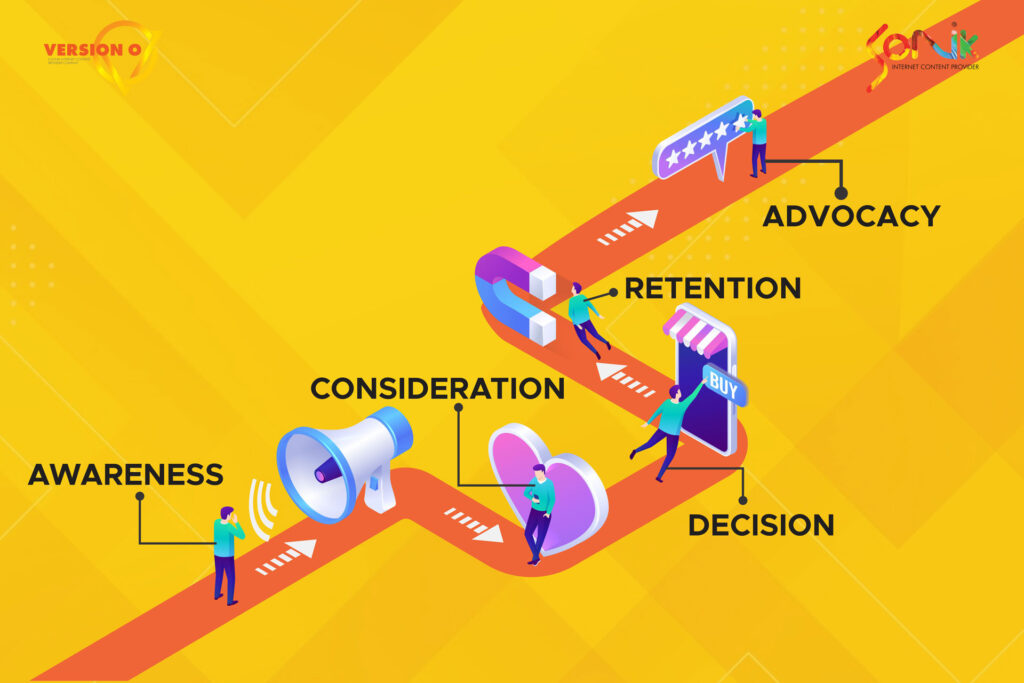User interaction is the bedrock of a brand’s performance. And the key to effective interaction is to have proper user journey mapping – in other words, creating a roadmap for a potential user to follow to interact with your brand and your online and offline assets.
Today, most user interactions start online. In fact, 9 out of 10 companies say that anticipating what a user needs and assisting them along that journey is crucial.1 Today, we want to focus on user journey mapping specifically for websites.
How do users interact with your website?
The access a user has to your website or app is the biggest and sometimes first point of interaction they have with your company. It is the angle from which they build their view of who you are and what you offer. That is what helps them make up their mind whether to use you or not. Therefore, fixing your website up to cater to what a user needs is important to the growth of your company.
The user experience aspect of conducting or attracting business has been garnering more attention as more people realise how important it is to the outcome of a business to customer interaction.
So, a lot of marketing strategies have been putting more focus on optimising user experience. This is so important that customer-centric companies make 60% more profits than companies that don’t.2
User-experience-centric marketing and interactions get better results, and many companies use user journey mapping as one of the tools to help them fix and optimise that experience.
What is user journey mapping?
A user journey map is a diagram that you make which tracks the user path or “flow” they go through when visiting your website, starting with the entry all the way to what could be considered the final steps of the process – usually an action the user performs, like buying a service or subscribing to your newsletter.
It’s usually put together to help further understand what a user experience on your website is like, and how you can make it better.
This diagram should not be arbitrarily made or based on theories or simple perception, but should be the result of research and data collected from users at every stage of their interaction with your company, and may be based on different things or look different depending on variables like the service offers, goals of the interaction, user base, and more.
This means the way you can make your own user journey map (or maps) is by collecting data from the website or app traffic and analysing it to know where your users tend to give up on the interaction, or leave your website, or become dissatisfied with what they’re experiencing.
After collecting the data, you test out different ways to solve any problems you find, and gather data about the new interactions until you find the best solutions and most positive responses.
There is no one formula
Since it is can be based on different points, or made for different websites, a user journey map does not have a specific layout or path it has to follow, so you can take liberties setting the dimensions based on what your users are looking for. However, it’s a good idea to make your diagrams clear, comprehensive, and strongly supported by data.
Most of the time, you may end up making many different diagrams to cover the entire scope of the user-company connection, with varied dimensions for each one to make sure you all the relevant information.
These maps may take into account things like what the user wants to be certain and assured about to keep going, what kind of information are they looking to find, or what step or phase do they show hesitation in or tend to drop the process entirely.
Providing a good experience is important if you want to provide a positive connection, and collecting all this information could help you figure out any gaps in your user experience that you can address and mend, optimizing the flow and making the experience more satisfactory for the user.
Top tips for good user journey mapping
Creating a user experience diagram can provide information that’s helpful for all departments and parts of your company, it will also provide you with clarity on the customer path and experience, and how you can smooth it out and gain user approval, and increase user loyalty to your company.
Here are some simple steps to follow to create one for your brand:
Step 1: Identify a user persona
Who is your ideal user? What do they want from your website? What will make them happy? Understanding these things is the first step.
Step 2: Identify use case scenarios
Chances are your brand or company does not offer just one service. So, create a user ‘journey’ for each service: imagine a scenario where a customer wants to buy service X. Then create the simplest ‘flow’ for them on your website to achieve that goal.
Step 3: Identify interaction touchpoints
A touchpoint is any space where your customers come into contact with your brand. Online, this can be through your social media, ads or your website. Once they’re on your website, more touchpoints open up depending on what they want to do. Identify all of these clearly.
Step 4: Create user journeys across the touchpoints
Mark out a clear roadmap that the user has to follow to complete their journey for each particular scenario you’ve outlined. This journey can be as simple or as complicated as you want, and it can go into as much detail as you require. There are lots of online tools to help you make good user journey maps. It’s good to explore those also.
Step 5: Continuously validate and refine the user journey maps
As we said before, there is no one formula – you need to keep collecting data and analysing what works and what doesn’t. Each time you find a glitch – a user not completing the journey, in other words – find out why it’s not working and how to make the experience better.
If you want more advice, book a free consultation with our team and we’ll help you refine a user journey map for your brand.
Liked this article? Make sure to check out our website and subscribe to our blog for more tricks and tips on content, SEO, and other topics to help your business.
References
1. Think With Google, Customer Journey Needs Statistics
2. Hubspot, 9 Customer Experience Trends & Stats That’ll Define the Next Year





